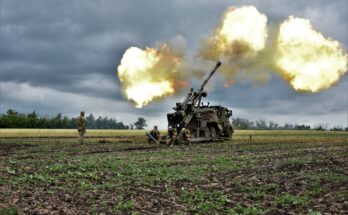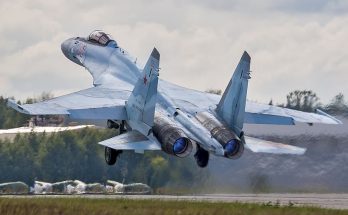
The Ukrainian government says Moscow is running out of missiles. Of course, Russia says this is not true. The truth is probably somewhere in the middle.
Recently, Kyiv said Russia had sufficient missiles for two or three major attacks on its cities and infrastructure. The Russian military has around 20 percent of its pre-war stockpiles of precision-guided munitions (PGMs), according to the Ukrainian military. Kyiv said Moscow may have just 550 missiles left.
The Ukrainian government points to Russia’s purchase of Iranian-made missiles and attack drones as support for its statement. Furthermore, Moscow has repurposed S-300 and S-400 air defense missiles to attack ground targets, which would not be necessary if sufficient PGMs were available.
Russian officials say that enough missiles are available to continue the war. These officials said Russia has thousands of missiles and the ability to produce even more.
Russia’s use of PGMs in Ukraine has been very heavy. Moscow had planned for a “short victorious war.” No matter what Moscow says, it is using its available missile stockpiles at a rate far greater than planned. Russia has long had difficulties maintaining annual missile production rates, and is facing a shortage of critical components.
The figures provided by Ukraine are probably too low, but those from Russia are definitely too high. Due to the Russo-Ukrainian War, many countries are rethinking the sufficient size of a missile stockpile to sustain a modern war. In addition, missile companies might not have the production capacity to meet this potentially higher-than-anticipated battlefield usage rate.
Forecast International’s Missile Forecast provides global long-range forecasts for a wide range of missiles, including air-to-air, surface-to-air, strike, anti-armor, surface-to-surface, anti-ship, and anti-radiation systems, both developmental and in production. Air defense systems such as the Patriot, S-400, ASTER, Sea Ceptor, MEADS, and RBS70 make up the single largest segment of this overall market, fueled in part by the appearance of more advanced combat aircraft and the proliferation of ballistic missiles. An annual subscription includes 134 individual reports, most with a 10-year unit production forecast. To learn more about all of Forecast International’s Weapon Systems forecasts, click here.
For more than 35 years, Larry has been involved in research and analytical work for various Forecast International projects. He has contributed to the Airborne Electronics Forecast and was chief editor on the World Aerospace Weekly newsletter. Larry was directly responsible for the creation of World Weapons Review, a biweekly industry market research publication specializing in weapon systems and related material. He was the creator of Unmanned Vehicles Forecast, launched to cover the growing market for civil and military drones, and was involved in the development of the Airborne Retrofit & Modernization Forecast service. He is currently responsible for the Missile Forecast and for FI's two Unmanned Vehicles Forecast services – Airborne Systems and Land & Sea Systems.




